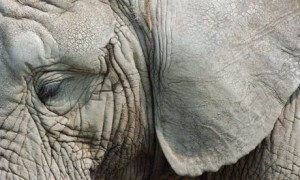Can you imagine hearing the “MOO” of a cow from Barn A, and understanding how it sounds different from that of a cow in Barn B? How close would you have to be to understand these differences? How long would you have to listen to their noises to be able to tell that they’re different cows? Well, it appears that earth’s most gentle giants are not only adorable, but they’re also incredibly astute! Elephants have shown that they can actually determine differences in human voices, which speaks to their incredible cognitive abilities.
A group of researchers at the University of Sussex teamed up with the Amboseli Elephant Research Project in Nairobi, Kenya to determine if elephants can differentiate predatory threats in their surroundings. Given the high incidence of poaching in populations of African elephants, it is critical to implement measures to ensure their survival. Part of the solution may involve understanding what threats elephants can already detect, and what they deem as dangerous.
The study was conducted on a group of free-ranging elephants in Amboseli National Park. The researchers recorded the voices of local Maasai and Kamba men, Maasai boys, and Maasai females. The first experiment involved playing the recordings of the voices of the Maasai and Kamba men to the elephants, which resulted in characteristic behavioral responses that signify fear recognition and defense, including bunching, bunching intensity, listening, smelling and retreat. However, the animals exhibited a higher probability to responding to the voices of the Maasai men, whom we know are predators to the elephants. Thus, the authors concluded that the elephants could differentiate between the voices of the different groups of men.
Next, they wanted to see if the elephants could tell Maasai men and women apart. When they played back the voices of the Maasai men and women, the elephants reacted more strongly to the sound of the Maasai men, and exhibited more defensive behaviors. The authors wanted to then test if the elephants could tell apart resynthesized voices, which means that the pitch of the male and female voices would be switched so that their pitch median and formant frequencies would be changed to sound like the opposite sex. Even still, the elephants could detect the difference between the male and females, and performed defensive behaviors upon hearing the male resynthesized voices! The authors attribute their ability to discriminate between the male and female voices as an ability to detect socio-phonetic differences between human males and females, which includes variations in utterance styles of men and women.
However, there was still the possibility that the elephants perceived the male resynthesized voices as Maasai boys, and therefore the researchers performed the last test between the voices of Maasai boys and Maasai men. Yet, the elephants still responded strongly to the sound of the men, and exhibited a higher probability of defensive behaviors.
Aside from the implications of conservation, the study speaks to the behavioral plasticity of the elephant brain. It is truly amazing that they can determine differences human voice cues, which allows them the ability to separate the noises that are non-harmful vs. the noises that could be life-threatening. It is also interesting to note their social structure, which provide them a set of sensory skills that aid in their detection of predators. Yet, we can never be too cautious with conservation, as humans have established themselves as the most harmful predators to elephants, and these amazing animals are worth all of our effort to protect them.
To learn more about the study, you can find the following article:
McComb, K., Shannon, G., Sayialel, K.N., and Moss, C. (2014) Elephants can determine ethnicity, gender, and age from acoustic cues in human voices. Proceedings of the National Academy of Sciences, 1-6. www.pnas.org/cgi/doi/10.1073/pnas.1321543111




